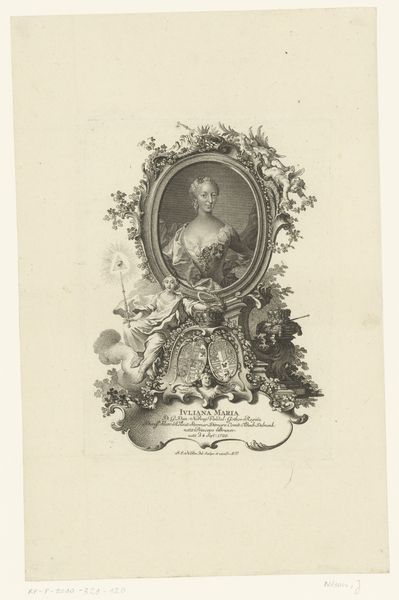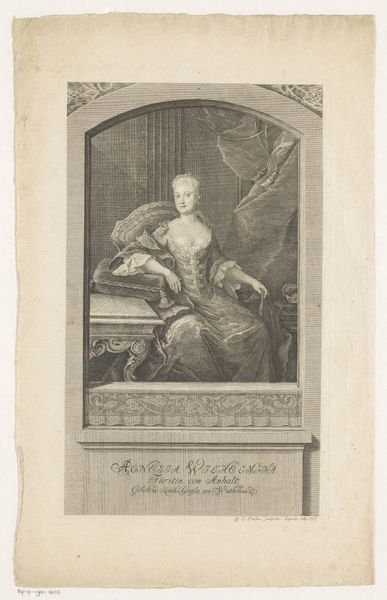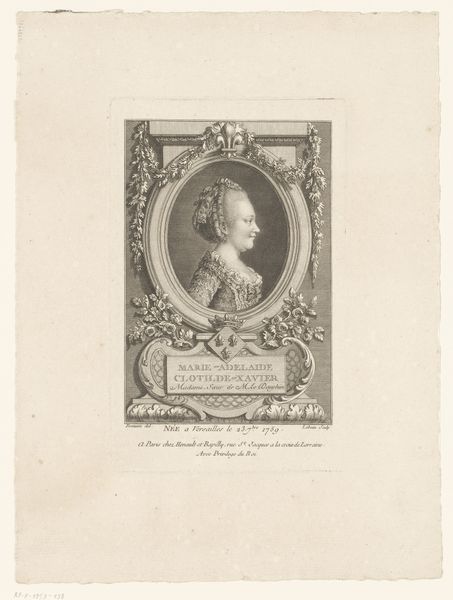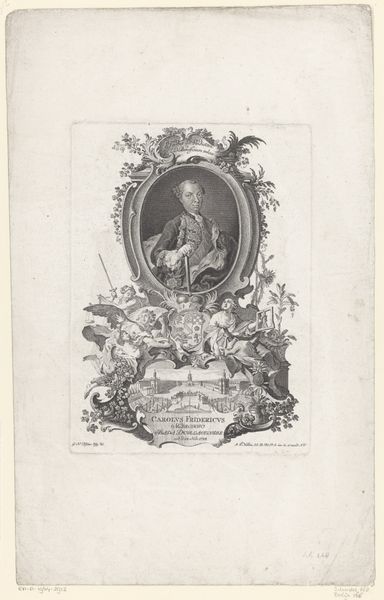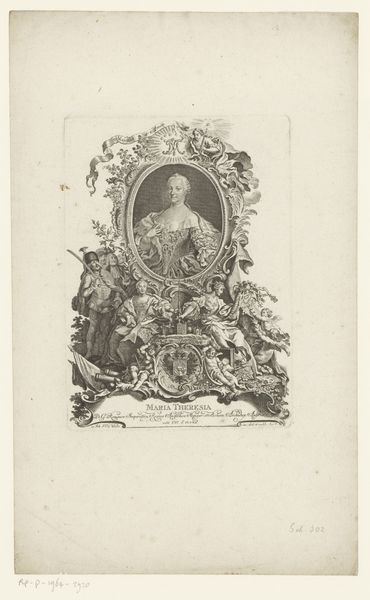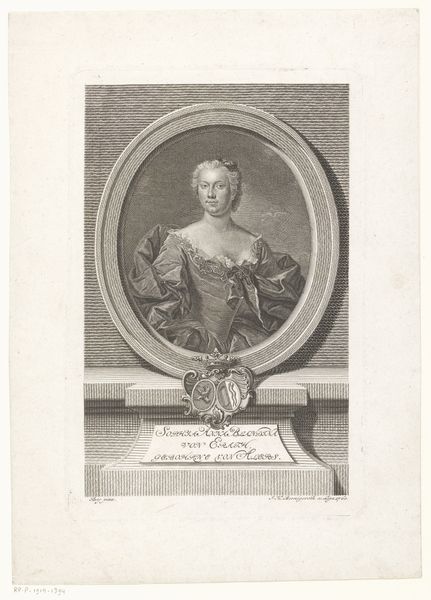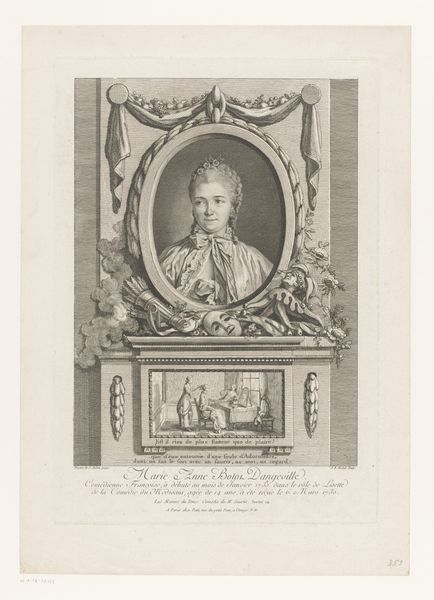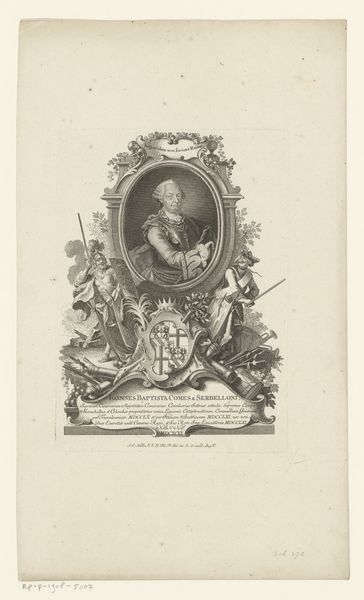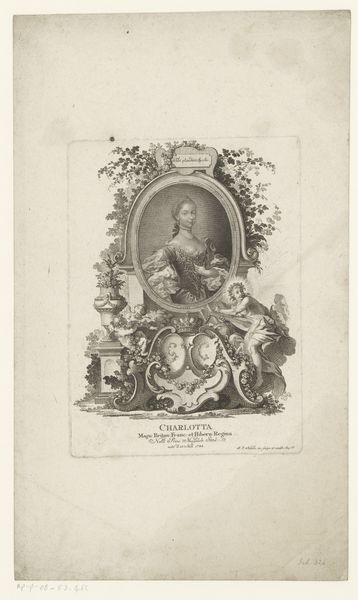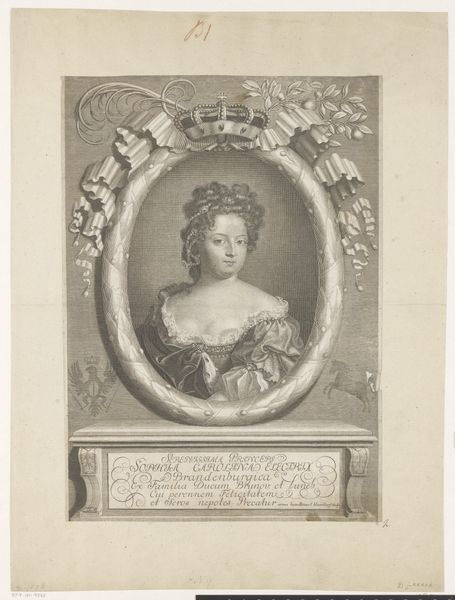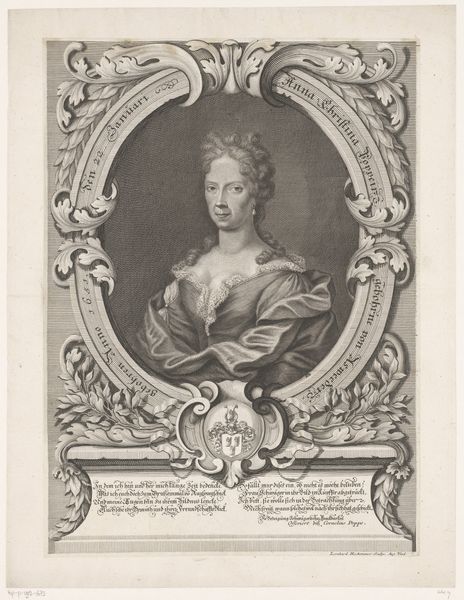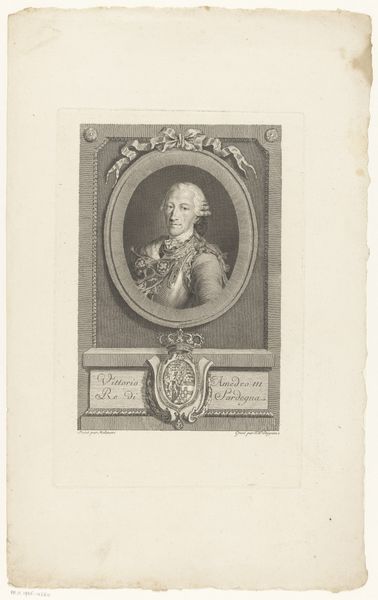
Portret van Anna Amalia van Brunswijk, hertogin van Saksen-Weimar-Eisenach 1766
0:00
0:00
Dimensions: height 161 mm, width 116 mm
Copyright: Rijks Museum: Open Domain
Curator: The delicacy of the line work here is striking. We're looking at an engraving from 1766 by Georg Christoph Schmidt, titled "Portret van Anna Amalia van Brunswijk, hertogin van Saksen-Weimar-Eisenach" or "Portrait of Anna Amalia of Brunswick, Duchess of Saxe-Weimar-Eisenach." Editor: My first impression is that it is extremely ornamental, almost overwhelmingly so, from the rococo flourishes to the inscription plaque and heavy drapery in the background. It evokes a sense of theatricality and performative authority. Curator: Indeed, the composition directs our gaze through a hierarchy of forms—from the swirling cartouche at the base, ascending towards her portrait. The artist is drawing from baroque conventions. Consider the framing device: Anna Amalia is positioned within a heavily embellished oval. This isn't simply a likeness, it is an assertion of status through visual language. Editor: Absolutely, and that status is inextricably linked to power. Anna Amalia was a significant figure – a duchess who essentially ruled the Duchy of Saxe-Weimar-Eisenach after her husband’s death. It speaks volumes about female agency. What does it mean to present her both as an individual but more importantly to highlight and commemorate her role? The engraving technique itself becomes a tool for dissemination and solidifying her presence in the cultural memory. Curator: The technical skill here is really remarkable. Schmidt uses hatching and cross-hatching to create subtle gradations of light and shadow, giving depth and volume to the figure. Note the way light catches the lace of her gown or defines the contours of her face— it is masterful manipulation of tone to enhance the visual impact. Editor: And isn't it intriguing how such an elaborate representation also subtly underscores the expectations placed upon women of her era? Note the way her attire subtly draws attention to the neckline and the posture communicates restraint. While celebrating her leadership, there remains a certain prescribed feminine ideal at play. It captures the complex tensions and performance of power through her gender and class. Curator: Examining the texture through these linear patterns adds layers of depth to our understanding. These visual strategies give rise to deeper discussions of societal role and gender identity. Editor: For me, this image really speaks to the layered context surrounding women in positions of authority, challenging and engaging with conventions.
Comments
No comments
Be the first to comment and join the conversation on the ultimate creative platform.
